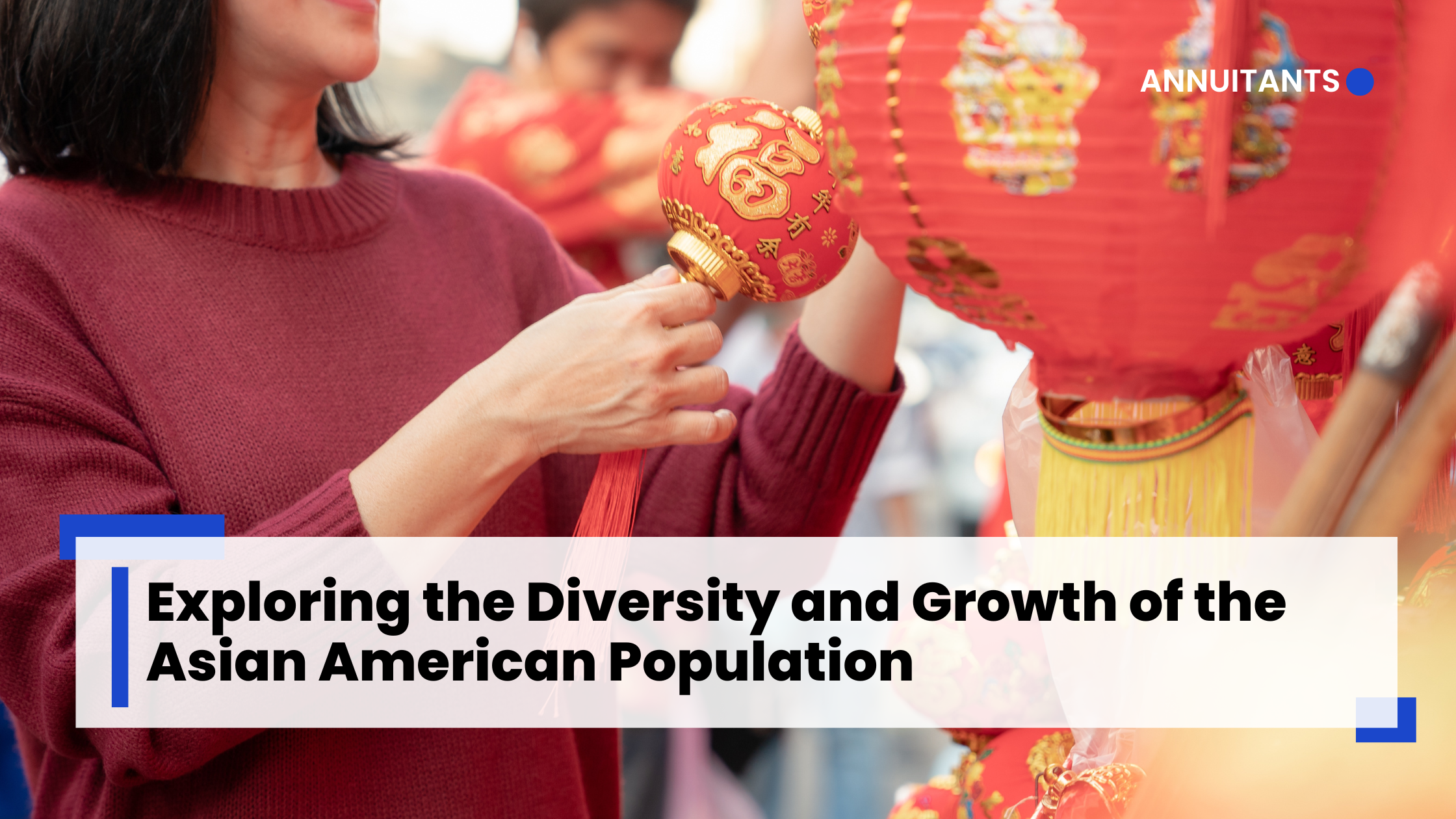A Pension Leader's Guide to Financial Wellness during the Lunar New Year
Did you welcome the Lunar New Year with open arms? The celebration presents an ideal occasion for fund leaders to rejuvenate their thinking and gain new perspectives about their fund and annuitants.
On Feb. 10, nearly 2 billion people celebrated the Lunar New Year, a festival typically celebrated in China and other Asian countries beginning with the first new moon of the lunar calendar and ending with the first full moon of the lunar calendar 15 days later. As leaders of Texas public employee retirement systems, it's the perfect time to align your fund's financial goals with the spirit of renewal and growth embodied by Lunar New Year celebrations.
According to the 2020 Census, the Asian American population in the United States grew by 35.4% from 2010 to 2020, reaching 24 million people, or 7.2% of the total population. Asian Americans are also the most diverse racial group in the U.S., with origins from more than 20 countries and regions and speaking more than 100 languages. Moreover, Asian Americans have varying socioeconomic characteristics, such as income, education, occupation, and homeownership, as well as different patterns of business ownership and entrepreneurship. That's just in the U.S.
According to the latest United Nations estimates, the current population of Asia is about 4.77 billion as of February 2024, accounting for about 60% of the world population. The combined population of both China and India is estimated to be over 2.8 billion people as of 2024. Asia is also the most diverse continent in the world, with origins from more than 20 countries and regions and speaking more than 100 languages.
As trustees and administrators of public employee pension systems, you have a fiduciary duty to manage the assets and liabilities of your plans in the best interest of your members and beneficiaries. This means that you need to understand the diversity and growth of the Asian American population within your annuitants and communities, as it can affect your plan design, service delivery, outreach, communication, funding, and investment strategies.
To help you learn more about the diverse and growing Asian American population, an upcoming webinar hosted by the U.S. Census Bureau titled “Exploring the Diversity and Growth of the Asian American Population” will take place from 1 to 2 p.m. CT on Thursday, Feb. 22, 2024. Register for the webinar and receive a confirmation email with instructions on how to join here.
The webinar will provide an overview of the Asian American population in the U.S. based on the 2020 Census and other sources of data. It will cover topics such as the size, growth, diversity, geographic distribution, socioeconomic characteristics, and business ownership of Asian Americans. The webinar will also demonstrate how to use data.census.gov, the Census Bureau’s data platform, to create an Asian community profile in selected geographies.
TEXPERS members attending the webinar might gain insights into the diverse and growing Asian American population, which may have different needs, preferences, and expectations from other pension system annuitants. Attendees will also learn how to access and use the Census Bureau’s data and tools to inform their decision-making and planning processes. This could help further fulfill a trustee's fiduciary duty and serve their members and beneficiaries better.
For those who missed the Lunar New Year, here's a primer and some tips to be like the dragon in 2024.
History of the Lunar New Year
Unlike the Gregorian calendar observance on Jan. 1, the Lunar New Year celebration is usually celebrated for multiple days. Although most may associate it with China, East and Southeast Asian culture, including Vietnamese and Korean communities, celebrate what some also refer to as the Spring Festival or Chūnjié in Mandarin. Even in the United States, there are those who observe the Lunar New Year.
The Spring Festival originally started as a period of celebration and respect for both earthly and divine entities, as well as ancestors. Numerous customs from earlier times are still present today in different ways, such as the preparation of cultural dishes, thorough cleaning of homes, and the performance of rituals by families and communities.

The Year of the Dragon
In the Lunar calendar, each year is symbolized by one of the 12 zodiac animals that mark the 12 stages along the sun's path across the sky. These zodiac animals are the rat, ox, tiger, rabbit, dragon, snake, horse, sheep, monkey, rooster, dog, and pig, which hold significant meanings. The traditional lunar calendar also assigns an element—earth, water, fire, wood, or metal—to each year, creating a unique connection between the animal and the element.
This year, 2024, is the year of the dragon, the legendary Chinese mythical creature known for its long serpentine body, anthropomorphic face, and beard. Ancient Chinese folklore depicts them as gods. The dragon became the crest of the Chinese emperor around 5,000 BC. It is a symbol of the highest ruler, representing blessings, power, excellence, and perseverance, among other good fortunes.
Happy Lunar New Year!
— The White House (@WhiteHouse) February 18, 2024
Watch as Michael Wu, founder of Choy Wun Lion Dance Troupe, explains the tradition behind the Dragon Dance and the significance of the Year of the Dragon. pic.twitter.com/hhYcQT2UTo
In various cultures, the Lunar New Year is observed in unique ways, yet the common objective remains: embracing the fortune and abundance brought by a fresh year. Some households host a reunion dinner with family on the eve of the start of the Lunar New Year. Some communities host elaborate events with lion and dragon dances and fireworks displays and invite community members to release lanterns into the night sky. The elderly might give out red envelopes with money. Households may post red paper icons and banners inscribed with calligraphy messages of good health and fortune in front of and inside homes.
What The Lunar New Year Means to Pension Fund Leaders

During the Lunar New Year, there is a sense of fresh beginnings, particularly in the year of the dragon. This positive outlook bodes well for pension funds, signaling a period of prosperity. Here's how pension fund decision-makers can get in on the Lunar New Year rejuvenation:
-
Embrace Financial Renewal: In Lunar New Year celebrations, individuals often make resolutions and set intentions for the coming year, focusing on areas of improvement and personal growth. Once upon a time in ancient China, the New Year's celebration included cleaning homes to get rid of evil spirits. It is a New Year's resolution of sorts. Psychologists say cleansing and renewals as akin to "taking a breath." It allows the mind to be free from old associations and patterns and consider how you might like to be transformed. Similarly, as a pension fund leader, your first step into the Lunar New Year is to set an intention of financial renewal. Let the weight of the past go and set your sights on financial renewal.
-
Building Resilience in Investments: Metaphorically speaking, the dragon from the Chinese zodiac can be seen as a representation of the board of a public retirement system. The head of the dragon represents the leadership and vision of the board of trustees, guiding the body of the dragon and setting the strategic vision for the retirement system. The body of the dragon symbolizes the governance structure and decision-making process of the board. Just as the body supports and sustains the dragon, the board establishes policies, procedures, and governance frameworks of the retirement system, collectively making decisions regarding investments, funding, benefits, and other critical matters to ensure the long-term sustainability of the system. The dragon's limbs symbolize the committees and working groups set up by the trustees to deal with specific areas of focus. Just like a dragon's legs and feet help it move, investment, audit, governance, and benefits committees have important roles in carrying out specialized tasks for a board of directors. Trustees can join these committees to investigate specific matters and make well-informed recommendations to the entire board. The dragon's tail represents the board of trustees overseeing risk management and compliance. Just as the tail keeps the dragon stable, the board watches over investments, funding, regulations, and legal obligations. The dragon's fire breath represents innovation and adaptability within the board of trustees. As the flames of a dragon's breath represent power and transformation, trustees embrace innovation and adapt to changing market conditions, technological advancements, and regulatory requirements.
-
Cultivating Long-Term Wealth: In both Lunar New Year celebrations and pension management, patience and consistency are fundamental virtues that pave the path to long-term success. Just as the Lunar New Year marks the beginning of a new cycle with patience for future prosperity, pension management requires a steadfast commitment to consistent contributions and investment strategies to secure a stable financial future for retirees. Embracing the enduring principles of patience and consistency ensures resilience in navigating challenges and reaps rewards in the form of sustainable growth and financial security.
-
Fostering Community and Support: The Luna New Year is as much about family and community as it is about self-renewal. The holiday generally involves travel to reunite with family in China. In the United States, Asian American communities families will gather for meals of traditional foods and attend parades and community festivals complete with dancers and fireworks. Community members get together to organize these festivities. As those who collaborate to commemorate the arrival of the Lunar New Year, pension fund leaders can take this time to commit to supporting the pension management industry in Texas. Collaboration and networking among public employee pension fund leaders are crucial for knowledge sharing, policy advocacy, and risk mitigation. By connecting with peers, leaders gain insights, influence legislation, and enhance their ability to safeguard pension assets. Texas public employee pension fund leaders have several avenues for networking and collaboration, including with their fellow members of TEXPERS. As a nonprofit association, we provide education and professional development to trustees, administrators, and employee groups managing retirement funds for state and local employees across the Lone Star State. TEXPERS also hosts professional development training and conferences each year, providing state-mandated continuing education. Our next event is coming up this April in Dallas. Learn more here. Other resources include the Texas Pension Review Board, where leaders can engage with the staff of the state regulatory agency and provide feedback on program needs, as well as various national organizations such as the National Institute on Retirement Security.
By integrating financial objectives with the essence of Lunar New Year festivities, you can tackle pension management with a positive mindset and unwavering commitment. This approach harnesses the vitality of the new year to ensure a prosperous retirement for individuals.
About the Author:Allen Jones is a seasoned journalist and communicator with over 20 years of experience in leading print and online media projects. He is currently the director of Communications and Event Marketing at the Texas Association of Public Employee Retirement Systems, where he engages and educates the association’s members through various media channels and programs. He has also written for several prominent publications, such as the Houston Chronicle, Venues Today, and Southeast Texas Record, covering a range of topics from hard news to lifestyle features. [email protected]

